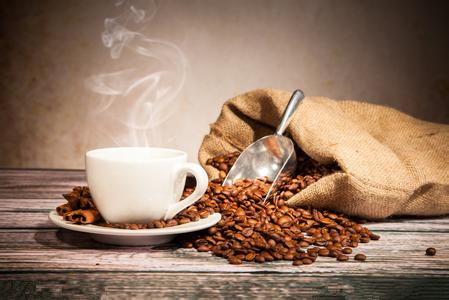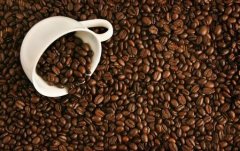Cultivation techniques of small-grain coffee: multi-dry shaping and cultivation

Multi-dry integer type
Multi-dry shaping is a method of shaping using the first-order branch as the main fruiting branch. The purpose of plastic surgery is to cultivate multiple trunks and grow a large number of robust primary branches, and the multi-trunk trees will not be topped. As a result, when the yield decreases after 3-5 years, the new trunk will be replaced.
Multi-stem method of ① cultivation
Oblique planting method:
When planting, the seedlings are obliquely planted, generally at an angle of 30-60 degrees with the ground. Oblique planting can inhibit the growth of the top of the trunk and promote the germination of basal straight branches. Attention should be paid to the selection of 3 or 4 sturdy and spaced direct branches for new stem culture. Cut off the old one when the new one has grown up.
Bending and drying method:
When planting, wait for the seedling to grow to about 1 meter high, then bend the trunk and fix it with a rope or wooden hook. Attention should be paid to the selection of 3 or 4 straight branches with strong growth and certain intervals, which should be cultivated into new stems. The result of the original work was cut off after 2 or 3 years. This method is more labor-intensive than the oblique planting method, and the trunk material must be fixed.
Cut-off method:
This method is mainly suitable for seedlings more than 2 years old, which are cut off at a distance of about 25 cm from the ground, then planted in the field, and then cultured into new stems by using several direct branches that grow after truncation.
No matter which method is used, when the new trunk is left, we should always pay attention to cutting off the straight branches sprouting from the new and old trunk.
Replacement of trunk of ② adult trees
After 3-5 years of fruiting, due to the continuous growth of the trunk, the fruiting part gradually increases, and the growth of the old trunk decreases year by year, so the trunk must be replaced in time. There are mainly two kinds of formation, namely, once replacement and step-by-step replacement.
One time replacement
After fruit picking, saw off all the trunks at once from the plant 25cm to 30cm above the ground. When a large number of direct branches are produced under the saw blade, 3 or 4 strong and spaced direct branches should be properly selected as new stems, and the rest should be removed. The advantages of this method are: cutting dry at one time, convenient management, uniform light exposure to the new trunk, robust growth, and will not cause excessive growth of branches and leaves because of excessive shade.
Step by step replacement
That is to say, 1 / 2 trunk is replaced every year, 1 / 2 new trunk is cultivated, 1 / 2 straight branches should be cultivated before the trunk is replaced, and when the stem is cut off, it will be sawed off from the top of the straight branch. Its disadvantage is that the growth of the new stem is affected by the old trunk, and it is easy to bend in case of strong wind and rain.
Rejuvenation of old trees
The rejuvenation of the old tree should be cut off at one time, and a small amount of harvest can be obtained one year after it is cut off. Cut off the dry after fruit picking, 30 cm off the ground in the old trunk, saw dry at an angle of 30 to 45 degrees from top to bottom, and the saw blade should be smooth. After cutting dry, it is necessary to dig deep into the soil, trim part of the root system, strengthen fertilization, promote growth, and remove excess buds in time.
Transformation of withered trees and weak trees
The cause of withered shoot trees is that after a large number of branches bear fruit, they consume too much nutrients and die, forming the phenomenon of emptiness in the middle of the crown. After planting young or adult trees, due to the loss of management, the trunk is weak and aging, the plant growth is poor, rarely bear fruit, this kind of tree is called weak tree.
According to the situation of the withered tip of the coffee tree, the method of cutting off the trunk in the middle or bending the trunk can be used to cultivate the new trunk and re-cultivate the crown. However, the management of water and fertilizer must be strengthened in order to be effective.
Important Notice :
前街咖啡 FrontStreet Coffee has moved to new addredd:
FrontStreet Coffee Address: 315,Donghua East Road,GuangZhou
Tel:020 38364473
- Prev

Cultivation techniques of small-grain coffee: soil management
Weeding, covering the young coffee garden, weeds are easy to breed, especially in the rainy season, weeding should be done once a month. If the labor force is sufficient, clean the grass should be removed first. Adult coffee garden can be weeded once every 2 to 3 months. If you use herbicides, you should be careful not to spray on the branches and leaves of coffee, and it is more important and prudent to use them in young coffee gardens. Coffee has shallow roots and is vulnerable to adverse climatic conditions such as high temperature and drought.
- Next

Cultivation technique of small-grain coffee: integral pruning
Single trunk shaping is a method of cultivating a trunk, using the primary branch as the backbone branch and the secondary and tertiary branches as the main fruiting branch. Single-stem plastic surgery usually takes the measure of removing the top to remove the terminal bud and promote the growth of branches. ① one-time topping method: when the coffee tree is 1.5-1.7 meters high, cut off the terminal bud. There are also those who reached the top at 1.8 to 2.2 meters high. ② multiple topping method: score
Related
- Beginners will see the "Coffee pull flower" guide!
- What is the difference between ice blog purified milk and ordinary milk coffee?
- Why is the Philippines the largest producer of crops in Liberia?
- For coffee extraction, should the fine powder be retained?
- How does extracted espresso fill pressed powder? How much strength does it take to press the powder?
- How to make jasmine cold extract coffee? Is the jasmine + latte good?
- Will this little toy really make the coffee taste better? How does Lily Drip affect coffee extraction?
- Will the action of slapping the filter cup also affect coffee extraction?
- What's the difference between powder-to-water ratio and powder-to-liquid ratio?
- What is the Ethiopian local species? What does it have to do with Heirloom native species?

